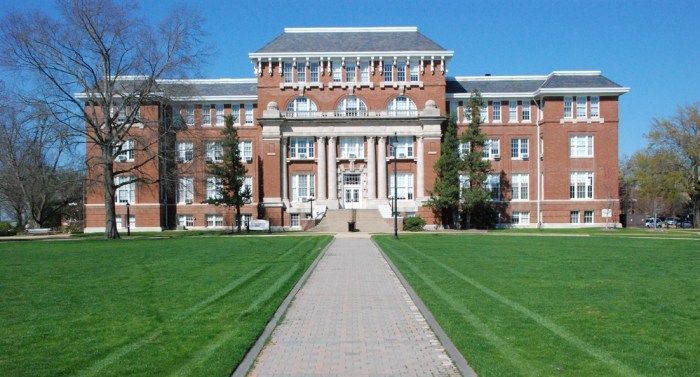In yesterday’s posts, martin seigrist took the first points by correctly identifying the First Baptist Church in Canton. JRGordon identified the building’s architect as R.H. Hunt, while W. White picked up a point for calling out other Mississippi buildings designed by R.H. Hunt.
In the second post martin seigrist also got two more points by identifying the capitals of Lee Hall at Mississippi State University, also by R.H. Hunt. JRGordon picked up another point by naming the year of construction as 1909.
We now almost have a three way tie for first place, but things can change rather quickly. If you are not the first to name the place, remember you still have until the end of the day to contribute information about the building to score a point. If you’re just joining us, jump right in, there’s still time to make up points. Read The Rules, and be the first to Name This Place.
Current Standings
W. White: 5 points
martin seigrist: 4 points
JRGordon: 4 points
Levi Weeks: 1 point
Tom Barnes: 1 point
Susan Allen: 1 point
Kathleen Jenkins: 1 point
Today’s First Challenge:
Categories: Architectural Research, Contest, Historic Preservation




Lyceum U of MS; 1848; William Nichols
LikeLike
Dang Martin was fast this morning.
The Lyceum is part of a National Historic Landmark district there as Ole Miss called the Lyceum-Circle District, listed in 2008, because of the Civil Rights events associated with James Meridith’s enrollment at the school.
LikeLike
Very interesting, I knew that the circle district was listed but did not know it was as a NHL.
LikeLike
The Lyceum is correct! Remember folks naming other info can win you a point.
LikeLike
The Lyceum was the first building on the Ole Miss campus. The north and south additions were added in 1903, I think. During the Civil War, it served as a hospital for injured and sick soldiers.
LikeLike
crpiii is right about the year for the additions – they were done by Theodore Link right around the time he started our New Capitol.
The Lyceum is a three-story temple-form Greek Revival building with an integral Ionic hexastyle portico according to HABS (done in 1974).
LikeLike
From “William Faulkner and the Tangible Past” by Thomas S. Hines:
After moving through Oxford’s public schools, he briefly attended the University of Mississippi and there, to his friend and classmate Ben Wasson, he indicated his already well-formed interest in the observation and criticism of architecture. “More than once,” Wasson recalled, “Faulkner pointed out to me the `bastard qualities’ of the [Ole Miss] buildings and said that the Lyceum Building was the best on the campus”. With its good overall Greek quality, Faulkner declared, it possessed purity and serenity.
LikeLike
What a great quote–thanks for digging that out and sharing it!
LikeLike
I should have gotten a point for identifying that MSU will renovate Lee Hall in the next year or two (like I said, depending on the funding situation). It was a cover story in the Reflector earlier this semester.
According to “The Battle of Ole Miss: Civil Rights v. States’ Rights,” the Lyceum was where Nicholas Katzenbach and the other federal officials hid James Meredith during the battle to integrate the campus. The battle was worse than many people realize. Katzenbach, while surrounded by wounded journalists and federal officials, called Washington during the early morning to report that if they did not receive reinforcements within 15 minutes, the crowd would overpower them, break into the Lyceum, and kill everyone in the building. Luckily, reinforcements did arrive.
Keep that in mind the next time Haley Barbour opens his mouth and talks about how Mississippi in the 1960s wasn’t that bad; when he does that he is talking out of his butt (nothing unusual about that).
LikeLike
I understand but depending on the financial situation of any organization any building will be restored in the next year or two.
LikeLike
I’m a fairly new reader, love reading everything on the site and am enjoying this contest. I had to comment on the Civil Rights violence and integration at the University. My grandparents lived on University Avenue in Oxford starting in the 1940’s on. I was a little girl while all this was going on, and we were living in Louisiana. I remember that my Dad was so concerned that he splurged on a long distance phone call to check on his family. They confirmed that it was a war type zone. They had hidden their vehicles at a relative’s house and were hiding out in their house, afraid to turn on lights at night. It was BAD!
LikeLike
Welcome. I’m glad you like the site. Thank you for sharing your remembrance of this event. Even with all the technical knowledge that may be known about the past it’s personal stories like yours that really bring history to life.
LikeLike